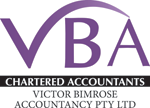One of the most critical tasks in small business ownership is regularly assessing your company’s financial health. Understanding your financial well-being goes beyond just looking at your bank balance; it involves thoroughly examining various financial indicators. In this article, we will delve into the critical aspects of evaluating the financial health of your small business.
1. Financial Statements: The Cornerstone of Assessment
Financial statements are the foundation upon which your evaluation should be built. They provide a snapshot of your company’s financial position at a given time. The three primary financial statements you should review are:
a. Balance Sheet: This document overviews your business’s assets, liabilities, and equity. It reveals what your business owns and what it owes.
b. Income Statement: Also known as the profit and loss statement, this shows your business’s revenues, costs, and expenses during a specified period. It determines whether your business is making or losing money.
c. Cash Flow Statement: This statement outlines your business’s cash inflows and outflows. It highlights where your money is coming from and going to.
You gain valuable insights into your business’s financial standing by thoroughly analysing these statements. You may wish to engage an accountant to help you understand these reports and which metrics are relevant to your business.
2. Key Ratios: Unveiling the Bigger Picture
Financial ratios offer a deeper perspective into your business’s financial health. These ratios provide context and allow for comparisons over time or with industry benchmarks. Some critical ratios to calculate include:
a. Liquidity Ratios: These assess your company’s ability to meet short-term obligations. The current ratio (current assets divided by current liabilities) and the quick ratio (quick assets divided by current liabilities) are essential liquidity ratios.
b. Profitability Ratios: These ratios reveal your business’s ability to generate profits. The Gross, operating, and net profit margin are key profitability ratios.
c. Efficiency Ratios: Efficiency ratios assess how well your business utilises its assets and liabilities. Inventory, accounts receivable, and accounts payable turnover are examples of efficiency ratios.
d. Debt Ratios: These ratios measure how much your business relies on debt for financing. The debt-to-equity ratio and the interest coverage ratio are vital in this category.
Regularly calculating these ratios and understanding their implications can help you identify areas requiring attention.
3. Trend Analysis: Past Performance and Future Projections
Comparing your financial data over time is an essential aspect of evaluation. Trend analysis involves examining historical financial statements to identify patterns and deviations. This can help you project future financial health and detect potential issues early.
4. Budget vs. Actual Analysis: Staying on Course
Budgeting is an indispensable tool for financial management. Regularly comparing your financial performance to your budgeted figures can highlight discrepancies and help you promptly take corrective actions.
5. Cash Flow Forecasting: Managing Liquidity
Cash flow forecasting involves predicting future cash flows, and considering inflows and outflows. This forward-looking approach helps you anticipate cash shortages or surpluses and plan accordingly.
6. Review Industry Benchmarks: How Do You Compare?
Evaluating your financial health is not complete without benchmarking against industry standards. Industry benchmarks provide context and allow you to gauge your business’s performance relative to competitors or peers in your sector.
7. Engage with Financial Professionals
While self-assessment is valuable, seeking guidance from financial professionals, such as your accountant, is essential. They can provide expert insights, help you interpret financial data, and offer tailored advice for your specific situation.
Evaluating the financial health of your small business is a multifaceted process that requires a comprehensive examination of financial statements, the calculation of key ratios, trend analysis, budget vs. actual comparisons, cash flow forecasting, and industry benchmarking. Regularly assessing your business’s financial health empowers you to make informed decisions and steer your company toward long-term financial success. For help in your business, call the VBA team on 07 5479 5499.
At VBA we specialise in strategic tax advice, offering tax and financial reporting for individual income earners, family businesses, tradies and construction companies.
Victor Bimrose Accountancy Pty Ltd (ASIC No. 1259423) ABN 53 010 957 294 is a Corporate Authorised Representative of Merit Wealth Pty Ltd ABN 89 125 557 002, Australian Financial Services Licence Number 409361.
Mark Foxley-Conolly (ASIC No. 1259421) is a Limited Authorised Representative of Merit Wealth Pty Ltd ABN 89 125 557 002, Australian Financial Services Licence Number 409361
General Advice Warning: This information has been prepared without taking into account your objectives, financial situation or needs. Because of this, you should, before acting on this information, consider its appropriateness, having regard to your objectives, financial situation or needs.




